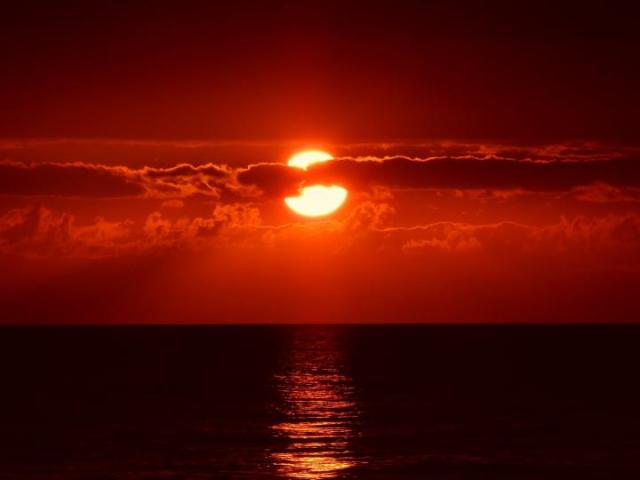Sunset, also known as sundown, is the daily disappearance of the Sun below the horizon due to Earth's rotation. As viewed from the Equator, the equinox Sun sets exactly due west in both Spring and Autumn. As viewed from the middle latitudes, the local summer sun sets to the southwest for the Northern Hemisphere, and to the northwest for the Southern Hemisphere.
The time of sunset is defined in astronomy as the moment when the upper limb of the Sun disappears below the horizon. Sunset colors are typically more brilliant than sunrise colors, because the evening air contains more particles than morning air.
Twilight is the time directly following a sunset. Dusk is at the very end of twilight, and is the darkest moment of twilight just before night. Night occurs when the Sun reaches 18 degrees below the horizon and no longer illuminates the sky.
Locations further North than the Arctic Circle and further South than the Antarctic Circle experience no full sunset or sunrise on at least one day of the year, when the polar day or the polar night persists continuously for 24 hours.

